HTML
--> --> -->Furthermore, low-lying states in
Lifetime measurement results by CE, DSAM, and RDDS should be consistent, but the results for the
This deviation can be attributed to the complexity of the level scheme in
In this study, excited states in
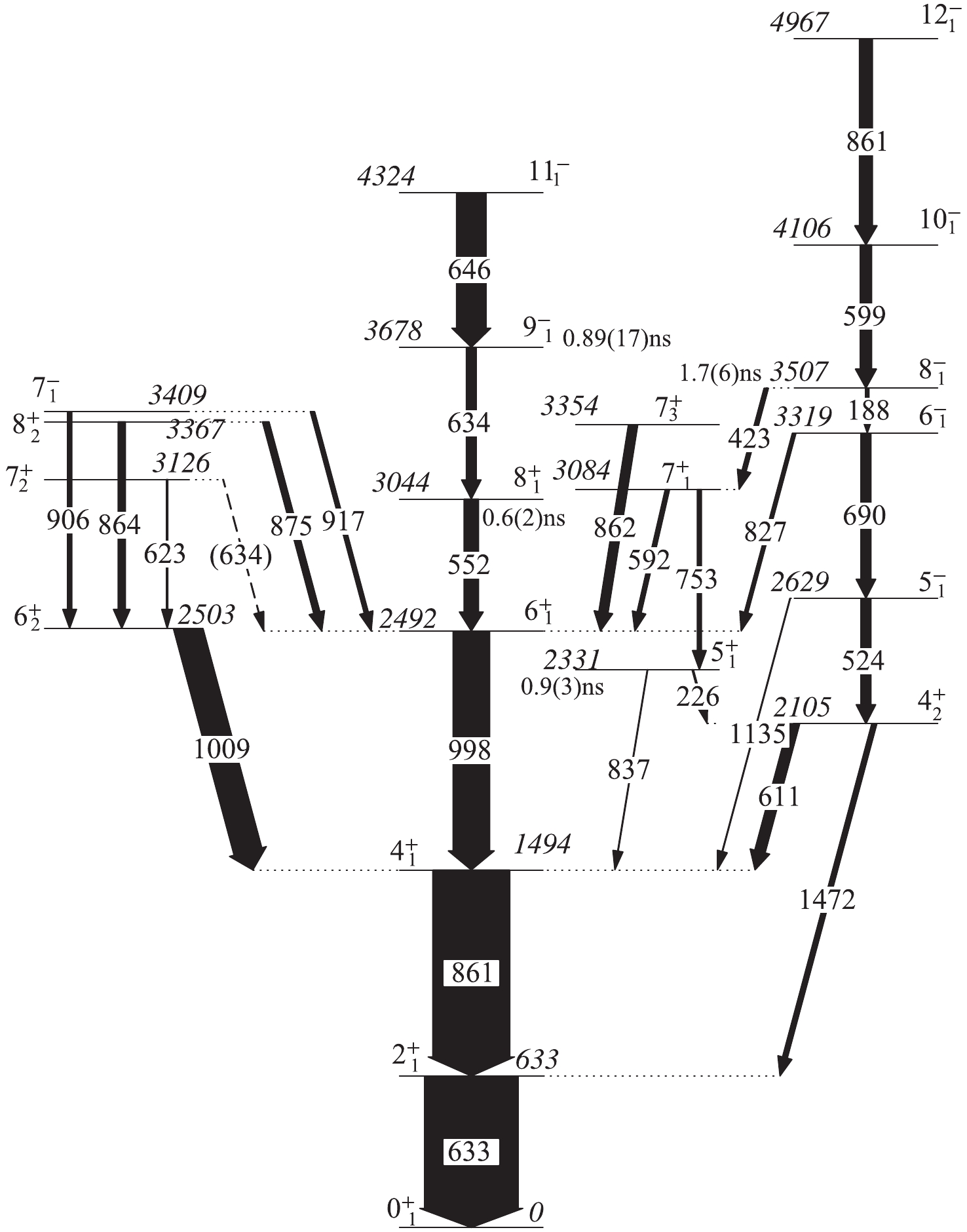 Figure1. Partial level scheme for 106Cd. The width of the arrows represents the relative intensities of the transitions. Relative intensity information was taken from Ref. [11]. Lifetimes of the 3678 keV 9
Figure1. Partial level scheme for 106Cd. The width of the arrows represents the relative intensities of the transitions. Relative intensity information was taken from Ref. [11]. Lifetimes of the 3678 keV 9 Figure2. Projections of the backward-backward matrix for a distance of 80 μm between the target and stopper foils.
Figure2. Projections of the backward-backward matrix for a distance of 80 μm between the target and stopper foils.The result in Ref. [5] was also reported in Ref. [12], and was obtained from the direct gating of the 861 keV 4
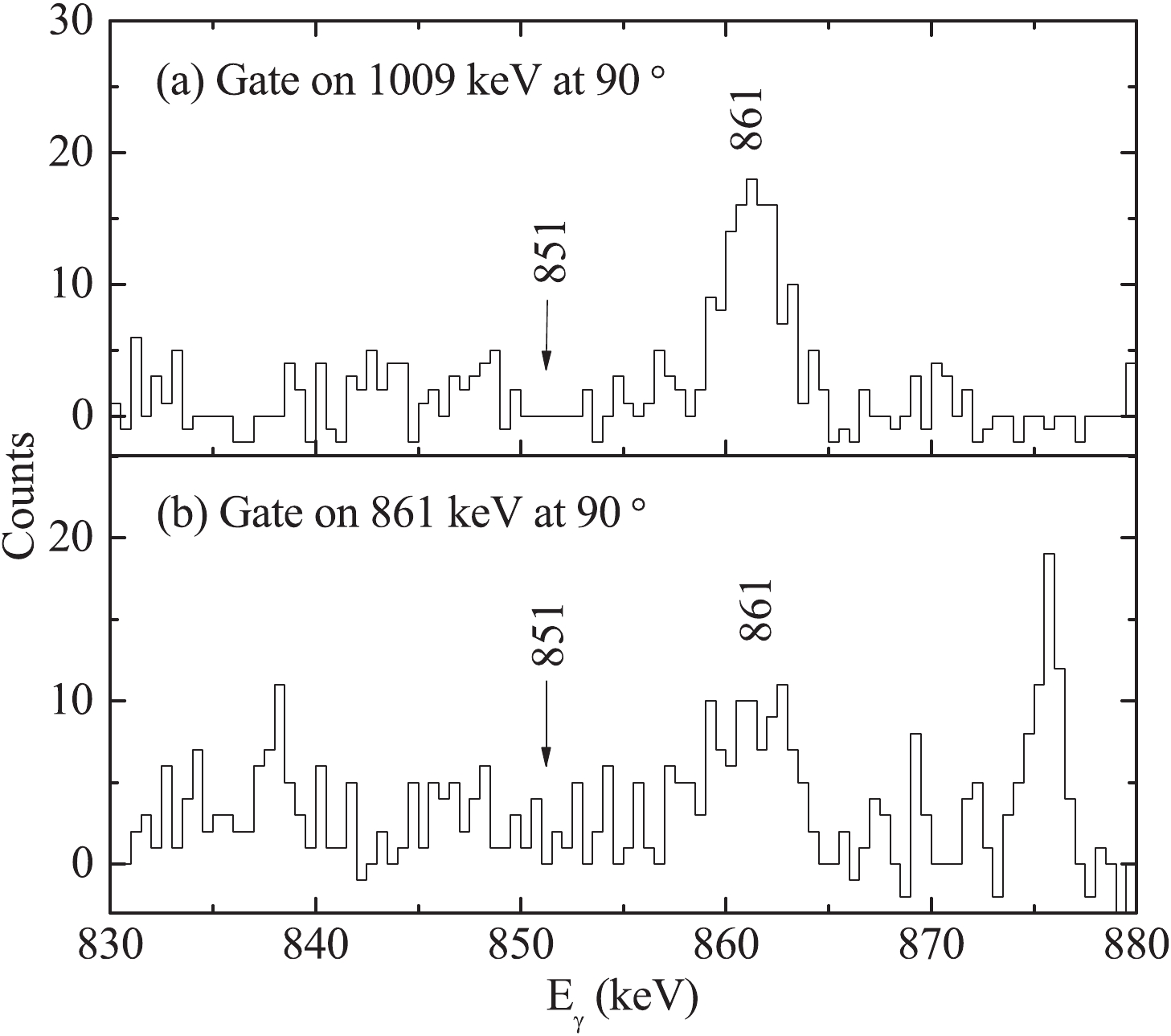 Figure3. Background-corrected coincidence spectra obtained by gating on the (a) 1009 keV and (b) 861 keV
Figure3. Background-corrected coincidence spectra obtained by gating on the (a) 1009 keV and (b) 861 keV In order to subtract the contaminations, direct and indirect gating cases should be considered simultaneously. In the case of direct gating on the transition B, as shown in Fig. 4, the mean lifetime
 Figure4. Level scheme sample for direct and indirect gating.
Figure4. Level scheme sample for direct and indirect gating. $ \begin{split} \tau_{L}(x) = \frac{I_{(u, s)}^{AB}}{\upsilon\cdot\dfrac{\rm d}{{\rm d}x}I_{(s, s)}^{AB}}\end{split},$  | (1) |
$\begin{split} \tau_{L}(x) = \frac{I_{(u, s)}^{AC}-\alpha\cdot I_{(u, s)}^{BC}}{\upsilon\cdot\dfrac{\rm d}{{\rm d}x}I_{(s, s)}^{AC}}\end{split},$  | (2) |
$\begin{split} \alpha = \frac{I_{(u, s)}^{AC}+I_{(s, s)}^{AC}}{I_{(u, s)}^{BC}+I_{(s, s)}^{BC}}.\end{split}$  | (3) |
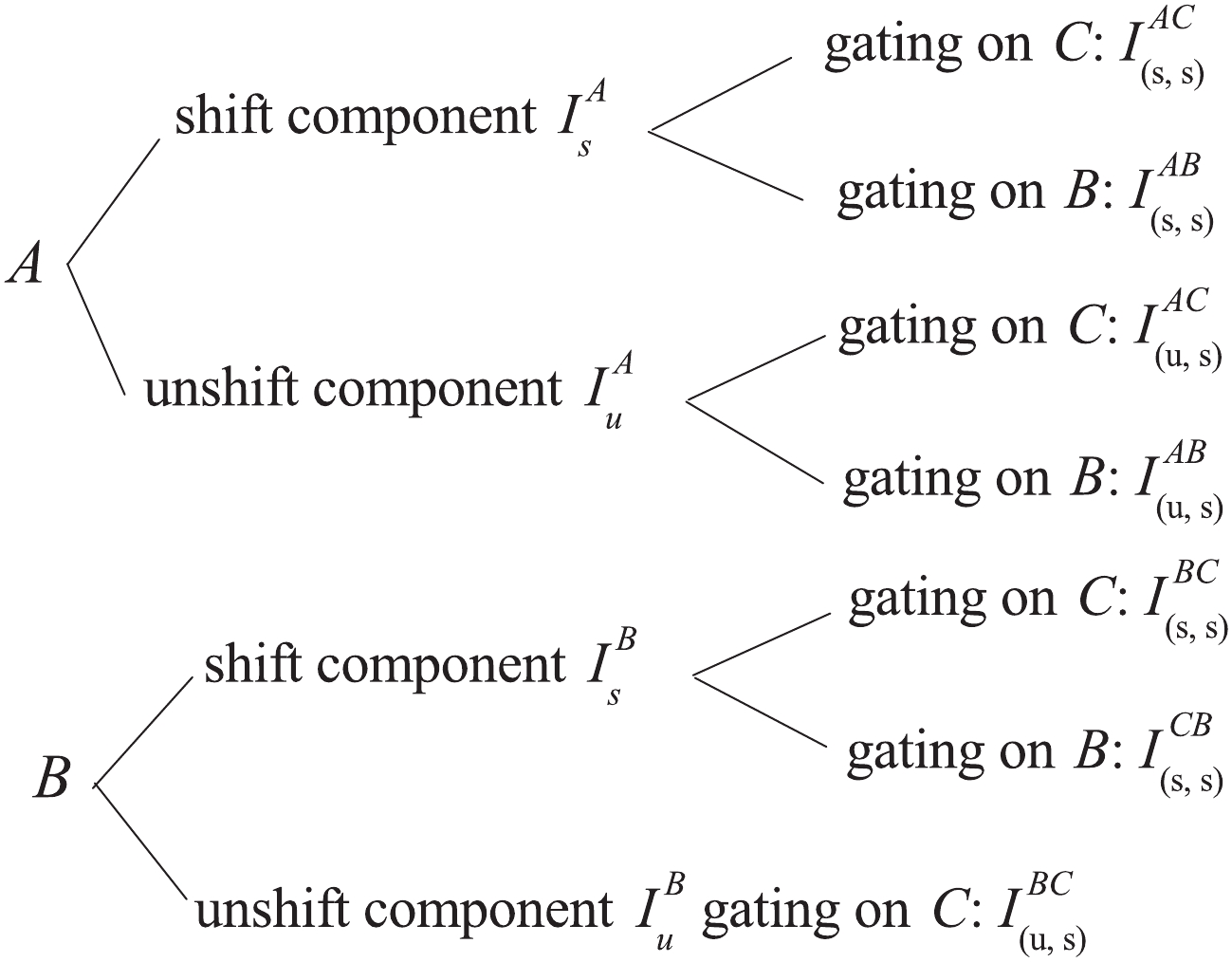 Figure5. Shifted and unshifted components of transitions A and B in the gating spectrum.
Figure5. Shifted and unshifted components of transitions A and B in the gating spectrum. $\left\{ \begin{split}&I_u^A = I_{(u,s)}^{AC} + I_{(u,s)}^{AB},\\&I_s^A = I_{(s,s)}^{AC} + I_{(s,s)}^{AB}.\end{split} \right.$  | (4) |
$ \begin{split} \tau_{L}(x) = \frac{I_{(u, s)}^{AC}-\alpha\cdot I_{(u, s)}^{BC}}{\upsilon\cdot\dfrac{\rm d}{{\rm d}x}I_{(s, s)}^{AC}} = \frac{I_{(u, s)}^{AB}}{\upsilon\cdot\dfrac{\rm d}{{\rm d}x}I_{(s, s)}^{AB}}.\end{split}$  | (5) |
$\begin{split} \frac{\rm d}{{\rm d}x}I_{(s, s)}^{AB} =& \frac{\rm d}{{\rm d}x}(I_s^A-I_{(s, s)}^{AC}) \\ =& \frac{\rm d}{{\rm d}x}I_s^A-\frac{\rm d}{{\rm d}x}I_{(s, s)}^{AC}, \end{split}$  | (6) |
$\left\{ \begin{split}&\frac{\rm d}{{{\rm d}x}}I_{(s,s)}^{AB} = \frac{{I_{(u,s)}^{AB}}}{{\upsilon \cdot {\tau _L}}} = \frac{{I_u^A - I_{(u,s)}^{AC}}}{{\upsilon \cdot {\tau _L}}},\\&\frac{\rm d}{{{\rm d}x}}I_{(s,s)}^{AC} = \frac{{I_{(u,s)}^{AC} - \alpha \cdot I_{(u,s)}^{BC}}}{{\upsilon \cdot {\tau _L}}},\end{split} \right.$  | (7) |
$ \frac{I_u^A-I_{(u, s)}^{AC}}{\upsilon\cdot\tau_{L}} = \frac{\rm d}{{\rm d}x}I_s^A-\frac{I_{(u, s)}^{AC}-\alpha\cdot I_{(u, s)}^{BC}}{\upsilon\cdot\tau_{L}}.$  | (8) |
$\begin{split} \tau_{L}(x) = \frac{I_u^A-\alpha\cdot I_{(u, s)}^{BC}}{\upsilon\cdot\dfrac{\rm d}{{\rm d}x}I_s^A}.\end{split}$  | (9) |
$\alpha = \frac{\varepsilon_A\cdot\omega_{AC}(\theta)}{\varepsilon_B\cdot\omega_{BC}(\theta)},$  | (10) |
If there are more than one contaminations, say transition E shown in Fig. 4, whose energy is the same as that of transition B, but transition C and E is not coincident with each other, Eq. (9) and Eq. (10) still hold. The biggest difference between Eq. (9) and Eq. (2) is that the factor of proportionality
It should be noted that Eq. (2) is used to calculate the lifetime of level L, which is fed by a single elementary transition directly [15]. But in the present work, the 2
It is necessary to modify the recoil velocity in the data analysis, because of the low recoil velocities of the compound nucleus. In the present data analysis, three 1 keV wide cuts were set on the Doppler-shifted parts of the 861 keV
 Figure6. (color online) Projection of the backward-shifted 633 keV peak in
Figure6. (color online) Projection of the backward-shifted 633 keV peak in Eq. (9) and Eq. (10) were used to fit curves of the shifted and unshifted normalized intensities by the NAPATAU program [20]. The intensities of the
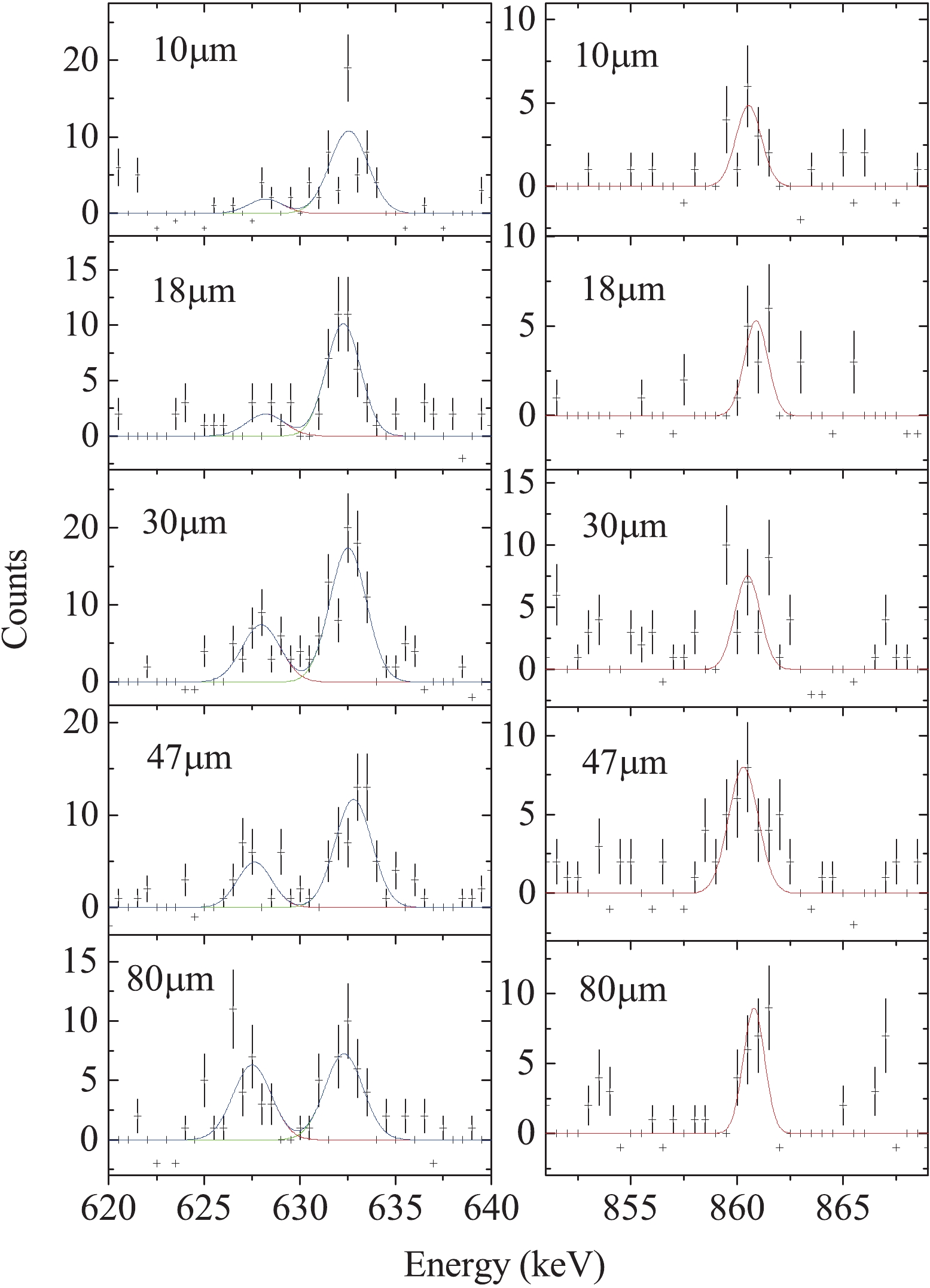 Figure7. (color online) (left) Projected stopped and backward-shifted components for the 633 keV, 2
Figure7. (color online) (left) Projected stopped and backward-shifted components for the 633 keV, 2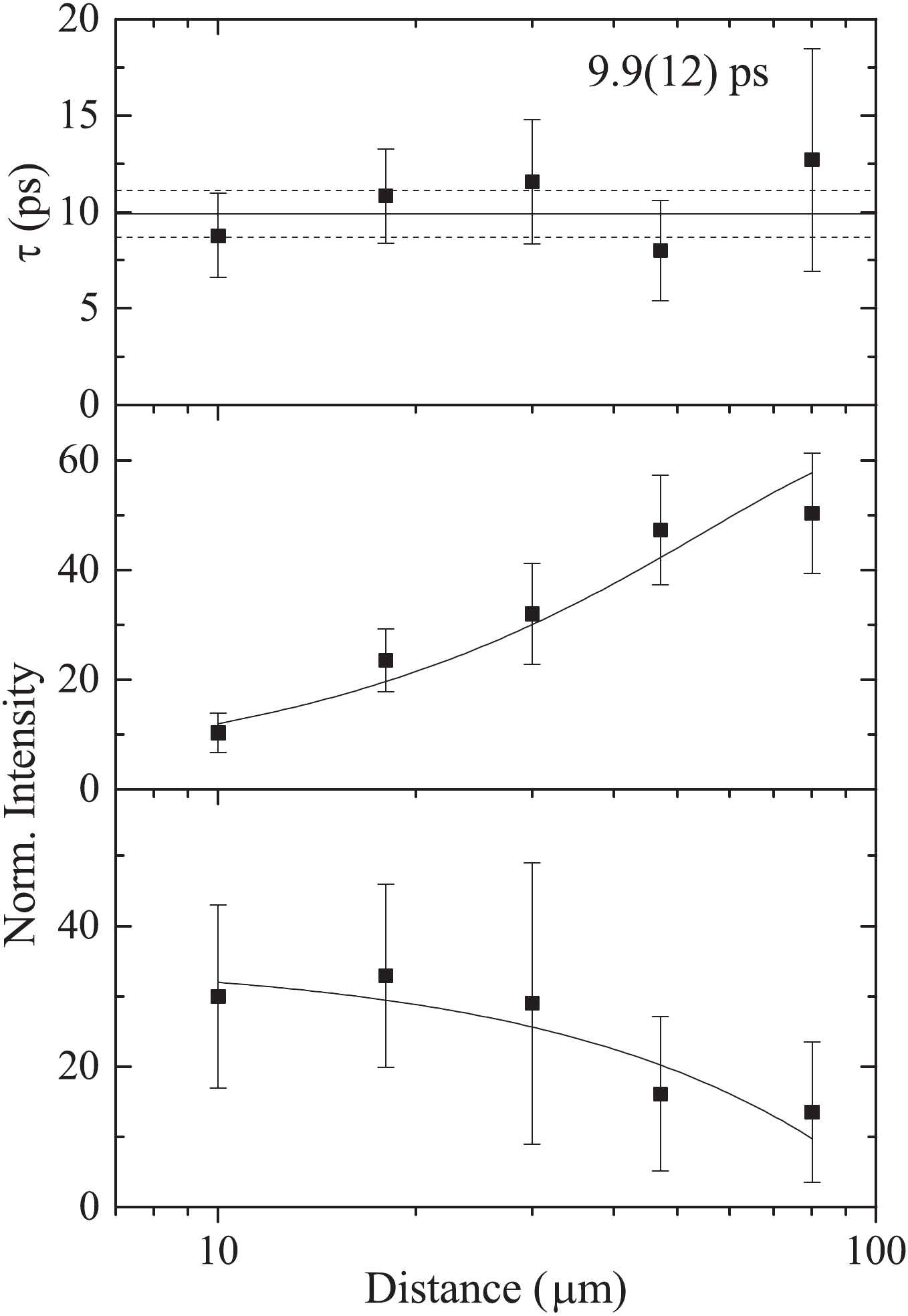 Figure8. Decay curves and lifetime determination of the 633 keV, 2
Figure8. Decay curves and lifetime determination of the 633 keV, 2The lifetime of
 Figure9. (color online) Systematics of
Figure9. (color online) Systematics of Several shell model calculations for light cadmium isotopes have been performed in Refs. [4, 7-10]. The theoretical
| references |   | inert core | proton orbits | neutron orbits | effective charge   |   | |
| exp | cal | ||||||
| This work | 9.9(12) | 0.081(10) | |||||
| M. T. Esat et al. [2] | 10.49(12) | 0.0765(9) | |||||
| S. K. Chamoli et al. [3] | 9.8 | 0.082 | |||||
| S. F. Ashley et al. [5] | 16.4(9) | 0.049(3) | |||||
| N. Benczer-Koller et al. [4] | 7.0(3) |     |         |         | (1.75e, 0.75e) | 0.115(8) | 0.061 |
        | (2.0e, 1.0e) | 0.097 | |||||
      | (1.75e, 0.75e) | 0.052 | |||||
      | (2.0e, 1.0e) | 0.083 | |||||
| N. Boelaert et al. [7, 8] T. Schmidt et al. [10] |     |     |           | (1.7e, 1.1e) | 0.0883 | ||
| A. Ekstrom [9] |     |     |           | (1.6e, 1.0e) | 0.076 | ||
Table1.Comparisons of lifetimes and
The excitation energy ratio
The authors would like to thank the crew of the HI-13 tandem accelerator at the China Institute of Atomic Energy for steady operation of the accelerator. We are also grateful to Dr. Q. W. Fan for preparing the target.







